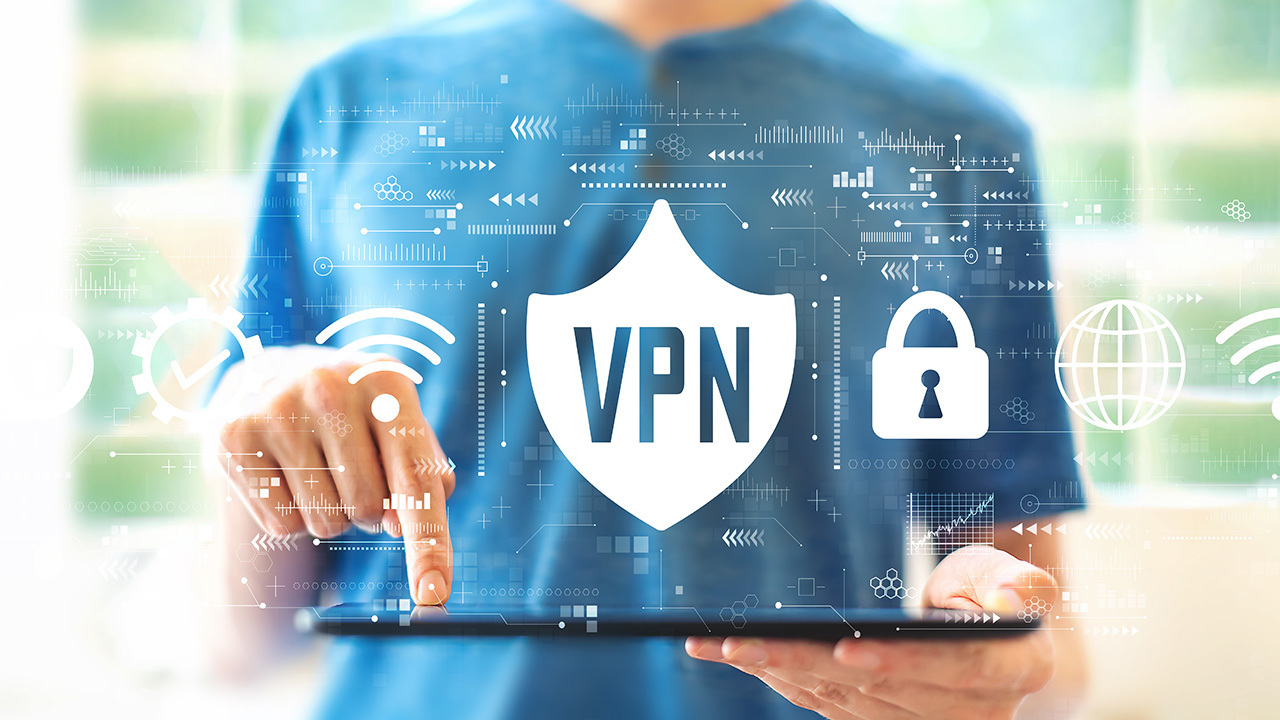Home>Software and Apps>Unlocking The Power Of VPN Sharing


Software and Apps
Unlocking The Power Of VPN Sharing
Published: March 3, 2024
Unlock the potential of VPN sharing with our top-rated software and apps. Experience secure and seamless connectivity for all your devices. Discover the benefits today!
(Many of the links in this article redirect to a specific reviewed product. Your purchase of these products through affiliate links helps to generate commission for Techsplurge.com, at no extra cost. Learn more)
Table of Contents
Understanding VPN Sharing
VPN sharing, also known as VPN split tunneling, is a feature that allows users to route some of their internet traffic through a VPN while letting the rest directly access the internet. This functionality provides a flexible approach to managing online activities, offering the ability to secure sensitive data while maintaining optimal connection speeds for other tasks.
By utilizing VPN sharing, users can designate specific applications or websites to utilize the encrypted tunnel provided by the VPN, while other applications access the internet through the regular, unencrypted connection. This capability is particularly valuable for individuals and businesses seeking to balance security and performance in their online endeavors.
VPN sharing empowers users to tailor their online experience based on their unique needs. For instance, users can choose to route their web browsing and email communications through the VPN to safeguard their privacy and protect sensitive information from potential threats. Meanwhile, they can direct streaming services and online gaming activities outside the VPN to ensure uninterrupted performance and reduced latency.
This approach not only optimizes network resources but also enhances the overall user experience by striking a harmonious balance between security and speed. Whether it's for personal use, remote work, or business operations, understanding VPN sharing opens up a world of possibilities for customizing online security and performance to suit individual requirements.
Benefits of VPN Sharing
-
Enhanced Security: VPN sharing allows users to selectively route sensitive data through the encrypted tunnel of the VPN, shielding it from potential threats such as hacking, surveillance, and data interception. By segregating traffic, individuals and organizations can fortify their security posture and mitigate the risk of unauthorized access to confidential information.
-
Optimal Performance: With VPN sharing, users can prioritize specific applications or tasks to utilize the VPN while allowing other activities to access the internet directly. This approach optimizes network resources, ensuring that bandwidth-intensive applications, such as video conferencing or file transfers, benefit from the VPN's security features without compromising connection speeds for other non-sensitive tasks.
-
Flexibility and Control: VPN sharing empowers users to tailor their online experience based on their unique requirements. Whether it's for personal use, remote work, or business operations, individuals can customize their internet traffic management, directing certain activities through the VPN for heightened security while maintaining direct access for other applications, providing the flexibility to adapt to diverse online needs.
-
Cost-Efficiency: By leveraging VPN sharing, organizations can optimize their network infrastructure, as they can allocate VPN resources specifically to the applications and data that require enhanced security, while allowing non-sensitive traffic to bypass the VPN. This targeted approach not only streamlines network utilization but also contributes to cost savings by efficiently utilizing VPN resources.
-
Improved Privacy: VPN sharing enables users to safeguard their privacy by channeling sensitive online activities, such as web browsing and email communications, through the VPN. This ensures that personal and confidential information remains shielded from potential eavesdropping and surveillance, enhancing overall privacy protection in the digital realm.
-
Seamless Remote Access: For remote workers and telecommuters, VPN sharing offers a seamless and secure means to access corporate resources while maintaining direct connectivity to local services and applications. This capability facilitates efficient remote collaboration and ensures that sensitive corporate data remains protected, even when accessed from external networks.
-
Geolocation Flexibility: VPN sharing allows users to selectively bypass geolocation restrictions for certain applications or services by routing them through the VPN. This can be particularly advantageous for accessing region-locked content or circumventing internet censorship, providing users with greater freedom and accessibility in their online activities.
-
Redundancy and Failover: By leveraging VPN sharing, organizations can establish redundancy and failover mechanisms, ensuring that critical applications and services remain accessible even in the event of VPN connection disruptions. This resilience enhances operational continuity and minimizes the impact of potential network interruptions on essential business functions.
-
Compliance and Regulatory Alignment: For businesses operating in regulated industries, VPN sharing can facilitate compliance with data protection and privacy regulations by enabling the segregation of sensitive data traffic through the VPN, thereby aligning with industry-specific security requirements and standards.
-
Enhanced User Experience: VPN sharing contributes to an improved user experience by allowing individuals to balance security and performance based on their specific needs. This tailored approach ensures that users can benefit from the security features of a VPN without compromising the speed and responsiveness of their internet connection for non-sensitive activities.
In summary, VPN sharing offers a myriad of benefits, including enhanced security, optimized performance, flexibility, cost-efficiency, improved privacy, seamless remote access, geolocation flexibility, redundancy, compliance alignment, and an enhanced user experience. This versatile feature empowers users and organizations to strike a harmonious balance between security and performance, catering to diverse online requirements while fortifying their digital resilience.
How to Set Up VPN Sharing
Setting up VPN sharing involves configuring the VPN client to selectively route specific internet traffic through the encrypted tunnel while allowing other traffic to access the internet directly. This process varies depending on the VPN client and the operating system being used. Below are general steps to set up VPN sharing:
-
Select a VPN Client: Choose a VPN client that supports the VPN sharing feature. Ensure that the selected VPN client is compatible with the operating system of the device on which VPN sharing will be configured.
-
Install and Configure the VPN Client: Install the chosen VPN client on the device and follow the provided instructions to configure the VPN connection. This typically involves entering the VPN server details, authentication credentials, and any additional settings required for the VPN connection.
-
Enable VPN Sharing or Split Tunneling: Access the settings or preferences of the VPN client and locate the option to enable VPN sharing or split tunneling. This feature may be found in the advanced settings or security settings of the VPN client.
-
Define Traffic Routing Rules: Once VPN sharing is enabled, define the traffic routing rules based on the specific applications or websites that should utilize the VPN connection. This can typically be configured by specifying the IP addresses, domain names, or application executables that should be routed through the VPN.
-
Test and Verify Configuration: After configuring the VPN sharing settings, test the setup by accessing both VPN-routed and non-VPN-routed applications or websites. Verify that the designated traffic is being routed through the VPN while other traffic accesses the internet directly.
-
Adjust Settings as Needed: Fine-tune the VPN sharing configuration based on the desired traffic routing preferences. This may involve adding or removing specific applications or websites from the VPN routing rules to align with evolving requirements.
-
Ensure Network Compatibility: Verify that the VPN sharing setup is compatible with the network environment, especially if the device is connected to a corporate or organizational network. Some networks may have specific policies or configurations that impact VPN sharing functionality.
-
Consider Device-Specific Configurations: For mobile devices or remote work setups, consider any device-specific configurations or restrictions that may affect VPN sharing. This includes understanding how VPN sharing interacts with mobile data usage and battery optimization settings.
By following these steps, users can effectively set up VPN sharing, tailoring their VPN usage to meet their specific security and performance needs. Whether for personal privacy, remote work requirements, or organizational security policies, configuring VPN sharing provides a versatile approach to managing internet traffic with enhanced control and flexibility.
Best Practices for VPN Sharing
When implementing VPN sharing, adhering to best practices is essential to maximize the benefits of this feature while ensuring optimal security and performance. Here are key best practices for VPN sharing:
1. Selective Routing:
Define clear criteria for routing traffic through the VPN. Prioritize sensitive applications and data that require encryption and privacy protection, while allowing non-sensitive traffic to bypass the VPN. This selective approach optimizes network resources and minimizes potential performance impacts.
Read more: Unlocking the Power of UF VPN: A Tech Blog
2. Regular Security Audits:
Conduct regular security audits to evaluate the effectiveness of VPN sharing configurations. Verify that designated traffic is correctly routed through the VPN and assess the integrity of the split tunneling setup. This proactive measure helps identify and address any potential vulnerabilities or misconfigurations.
3. User Education:
Educate users on the purpose and benefits of VPN sharing, emphasizing the importance of adhering to traffic routing guidelines. Provide clear guidelines on which applications or activities should utilize the VPN and communicate the potential security implications of bypassing the VPN for sensitive tasks.
4. Traffic Monitoring and Analysis:
Implement traffic monitoring and analysis tools to gain insights into the volume and nature of VPN-routed and non-VPN-routed traffic. This visibility enables administrators to identify patterns, detect anomalies, and make informed decisions regarding traffic routing adjustments and security enhancements.
5. Performance Optimization:
Regularly assess the performance impact of VPN sharing on network resources and user experience. Fine-tune routing rules and configurations to strike a balance between security and performance, ensuring that VPN usage aligns with operational requirements without compromising connectivity speeds.
6. Compliance Alignment:
Align VPN sharing configurations with relevant compliance standards and industry regulations. Ensure that traffic routing practices adhere to data protection requirements and privacy regulations, particularly in regulated industries such as healthcare, finance, and government sectors.
7. Network Segmentation:
Leverage network segmentation to isolate sensitive traffic from non-sensitive traffic within the organization's network infrastructure. This approach enhances security by creating distinct network segments for VPN-routed and non-VPN-routed traffic, reducing the potential impact of security breaches.
8. Regular Updates and Patch Management:
Stay vigilant with VPN client updates and security patches to mitigate potential vulnerabilities. Timely updates help address known security issues and ensure that the VPN sharing functionality remains resilient against emerging threats and exploits.
By embracing these best practices, organizations and individuals can effectively harness the benefits of VPN sharing while maintaining a robust security posture and optimizing network performance. This proactive approach fosters a secure and efficient environment for managing internet traffic, aligning with diverse operational and privacy requirements.
Security Considerations for VPN Sharing
When implementing VPN sharing, it is imperative to prioritize security considerations to safeguard sensitive data and mitigate potential risks. Here are essential security considerations for VPN sharing:
Read more: Unlocking the Power of VPN on Your Phone
1. Traffic Segregation:
Segregating traffic for VPN routing and direct internet access is crucial to prevent potential security vulnerabilities. By clearly defining which applications and data utilize the VPN and which access the internet directly, organizations can minimize the exposure of sensitive information to external threats.
2. Encryption Strength:
Ensure that the VPN encryption protocols and algorithms meet industry standards for robust data protection. Strong encryption mechanisms, such as AES (Advanced Encryption Standard), contribute to safeguarding transmitted data against unauthorized interception and decryption attempts.
3. Access Control:
Implement stringent access controls to regulate VPN sharing configurations and traffic routing rules. By restricting unauthorized modifications to VPN settings and routing parameters, organizations can prevent potential misuse or unauthorized alterations that may compromise security.
4. Threat Detection and Response:
Deploy robust threat detection mechanisms to monitor VPN traffic for anomalies, potential intrusions, and malicious activities. Proactive monitoring and timely response to security incidents are essential to maintain the integrity of VPN sharing environments and mitigate emerging threats.
5. Endpoint Security:
Ensure that devices accessing the VPN and participating in VPN sharing adhere to stringent endpoint security measures. This includes enforcing up-to-date antivirus software, endpoint encryption, and secure configuration practices to mitigate the risk of compromised endpoints compromising VPN security.
6. Compliance Alignment:
Align VPN sharing practices with relevant compliance requirements, such as data protection regulations and industry-specific security standards. Adhering to compliance mandates ensures that VPN sharing configurations meet legal and regulatory obligations, particularly in highly regulated sectors.
7. User Awareness and Training:
Educate users about the security implications of VPN sharing and the importance of adhering to traffic routing guidelines. Promote awareness of potential risks associated with bypassing the VPN for sensitive activities, empowering users to make informed decisions that prioritize security.
8. Secure Configuration Management:
Implement secure configuration management practices for VPN clients and sharing settings. Regularly review and update configurations to align with security best practices, ensuring that VPN sharing remains resilient against evolving threats and vulnerabilities.
By addressing these security considerations, organizations and individuals can fortify their VPN sharing environments, enhancing data protection, threat resilience, and regulatory compliance. Proactive security measures contribute to a robust and secure VPN sharing implementation, aligning with the overarching goal of balancing security and performance in online activities.
Conclusion
In conclusion, the concept of VPN sharing represents a dynamic approach to managing online security and performance, offering a versatile solution for individuals and organizations seeking to balance the protection of sensitive data with the need for optimal connectivity. By selectively routing specific internet traffic through a VPN while allowing other activities to access the internet directly, VPN sharing empowers users to tailor their online experience based on their unique requirements.
The benefits of VPN sharing are multifaceted, encompassing enhanced security, optimal performance, flexibility, cost-efficiency, improved privacy, seamless remote access, geolocation flexibility, redundancy, compliance alignment, and an enhanced user experience. This feature-rich approach enables users to fortify their digital resilience while customizing their online activities to align with diverse operational, privacy, and security needs.
When setting up VPN sharing, it is essential to follow best practices to maximize its benefits while ensuring optimal security and performance. Selective traffic routing, regular security audits, user education, traffic monitoring, performance optimization, compliance alignment, network segmentation, and regular updates form the cornerstone of a robust VPN sharing implementation.
Moreover, security considerations play a pivotal role in the successful deployment of VPN sharing. Traffic segregation, encryption strength, access control, threat detection and response, endpoint security, compliance alignment, user awareness, and secure configuration management collectively contribute to fortifying the security posture of VPN sharing environments.
As the digital landscape continues to evolve, VPN sharing stands as a strategic tool for individuals and organizations to navigate the complexities of online security and performance. By embracing the capabilities of VPN sharing and adhering to best practices and security considerations, users can harness the full potential of this feature while safeguarding their digital assets and privacy.
In essence, VPN sharing represents a harmonious fusion of security and performance, offering a tailored approach to managing online activities in an increasingly interconnected world. Whether for personal privacy, remote work requirements, or organizational security policies, VPN sharing serves as a beacon of adaptability and resilience, empowering users to navigate the digital realm with confidence and control.











